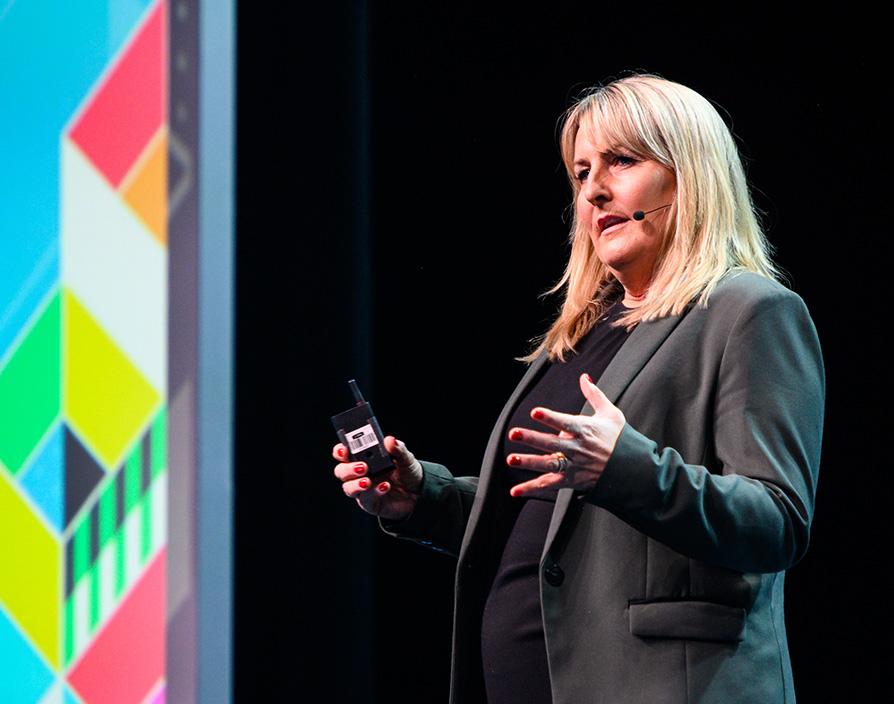UK economic growth has proved sluggish in recent months. The job market also appears to be slowing down. Unemployment rates have risen from 4% in the March to May quarter to 4.2% between the June to August quarter this year. Businesses appear to be hiring less due to the impact of rising prices and higher interest rates. With looming economic uncertainty, how can businesses prepare for tough times ahead? Oracle NetSuite’s EMEA Senior Vice President, Nicky Tozer, joined me at for NetSuite’s biggest event of the year, SuiteWorld, held at the Caeser’s Forum in Las Vegas, as she spoke to me about the struggles UK SMEs face – and how they can overcome these challenges.
Tozer explained how economic challenges can create a knock-on effect across several areas of your business, and which ones are particularly affecting UK SMEs this quarter. “Several events are happening currently which are creating challenges for the UK market,” Tozer told me. “Inflation, rising costs and the slowing down of the economy are what all our small and medium-sized business customers are suffering with. That has a knock-on effect on many other parts of their business. If your costs are rising, then your supply chain becomes more difficult, and then your inventory becomes difficult.
“If your costs are high then you struggle to have the right number of employees potentially, so it becomes important to retain the talent that you’ve got so you’re not constantly looking for more talent that’s difficult to find. All those things are happening around the world, but we’re seeing it a lot in the UK with all these different challenges that keep rising and businesses are having to find their way around these hurdles.” It’s important to have visibility in your day-to-day operations and your supply chain, Tozer said. This is so you can have a clear insight into what is going on in your business and quickly observe rising costs in your supply chain. With added visibility, you can make better business decisions to mitigate costs and plan your next move. Having a single integrated platform, such as NetSuite, can allow you to have a clear look at all your data under one roof.
“NetSuite helps give businesses the visibility of the problems in their business,” Tozer said. “You can set alerts that tell you when a cost is rising. When you know that certain costs are rising you can then plan on what to do about it. That means when you have a bunch of suppliers in your supply chain you also can have the visibility of those relationships in each of those supply chains. So, if their costs go up, you may decide to limit the number of people you have in your supply chain and have fewer quality relationships than many where the prices fluctuate a lot. It gives you that visibility, which means you have control of the situation and agility to change it.”
Being able to automate tedious tasks can allow your finance team to focus on planning and analysis, rather than spending copious amounts of time crunching data. Time is money, and automating mundane tasks can give your teams more room to focus on what matters. Not only that, but automating tedious jobs can allow your employees to do more of what they enjoy – and this can help retain talent. “It is important to not let your finance teams just be crunching numbers, which takes an awful long time and is very boring,” Tozer explained. “But if they have a platform like NetSuite, they can start to analyse numbers with their time. That’s important in retaining talent because if people are doing things they like to do, they’re more likely to stay.
“It’s not just about identifying costs and being able to eliminate them, but actually, it’s about giving people roles that they want to be involved in so you don’t lose that talent and spend money hiring.” Addressing the rising cost of borrowing, Tozer explained how visibility in your day-to-day operations can allow you to manage your cash flow better and reduce the need to take out expensive loans. “Your cash flow is very visible throughout the platform as well, so if you can manage your cash flow, you’re not spending a lot on borrowing expensive loans because you can manage which cash you’re using at different times. This is a way you can get around inflation and the rising cost of borrowing.”
Tozer stressed the importance of always having visibility in your business. It is better to be aware of your profits and losses than not knowing at all. Sometimes it can be easier to bury your “head in the sand”, as Nicky says, but taking a good look at your data can all the more save your business from transcending into a downward spiral. It is better to be aware of your numbers so you can effectively make better business decisions. With more visibility comes more predictability, Tozer said. “If your business is suffering, and you know it’s suffering, that’s better than not knowing,” she added.
“Because then you can do something about it and take action based on informed data. You can make an informed decision because you’ve based it on the data and the facts presented to you. Based on the businesses we’ve spoken to, that’s what makes them invest in a platform like NetSuite, so they can make those informed decisions. And it might be doing absolutely nothing. They may just plan to ride through the wave, such as waiting for inflation to go down, or for energy costs to go down. And then they can take off again. Sometimes you can bury your head in the sand. And the hardest thing sometimes would be to face up to what is happening, and when you have visibility around that you can make better decisions.”
As NetSuite celebrates its 25th anniversary, Tozer spoke about the future of the cloud-based software company: “We will see a continuation of what we’re doing. We’re determined to help small medium-sized businesses to run their business better, to get better visibility, control and agility. What drives what we develop is our customers, as well as compliance and regulation. This all drives what we do from a development perspective in that respect, but everything else comes from what customers need. We go to our customers across all industries to help understand what they need to drive their business better.”
Share via:








































